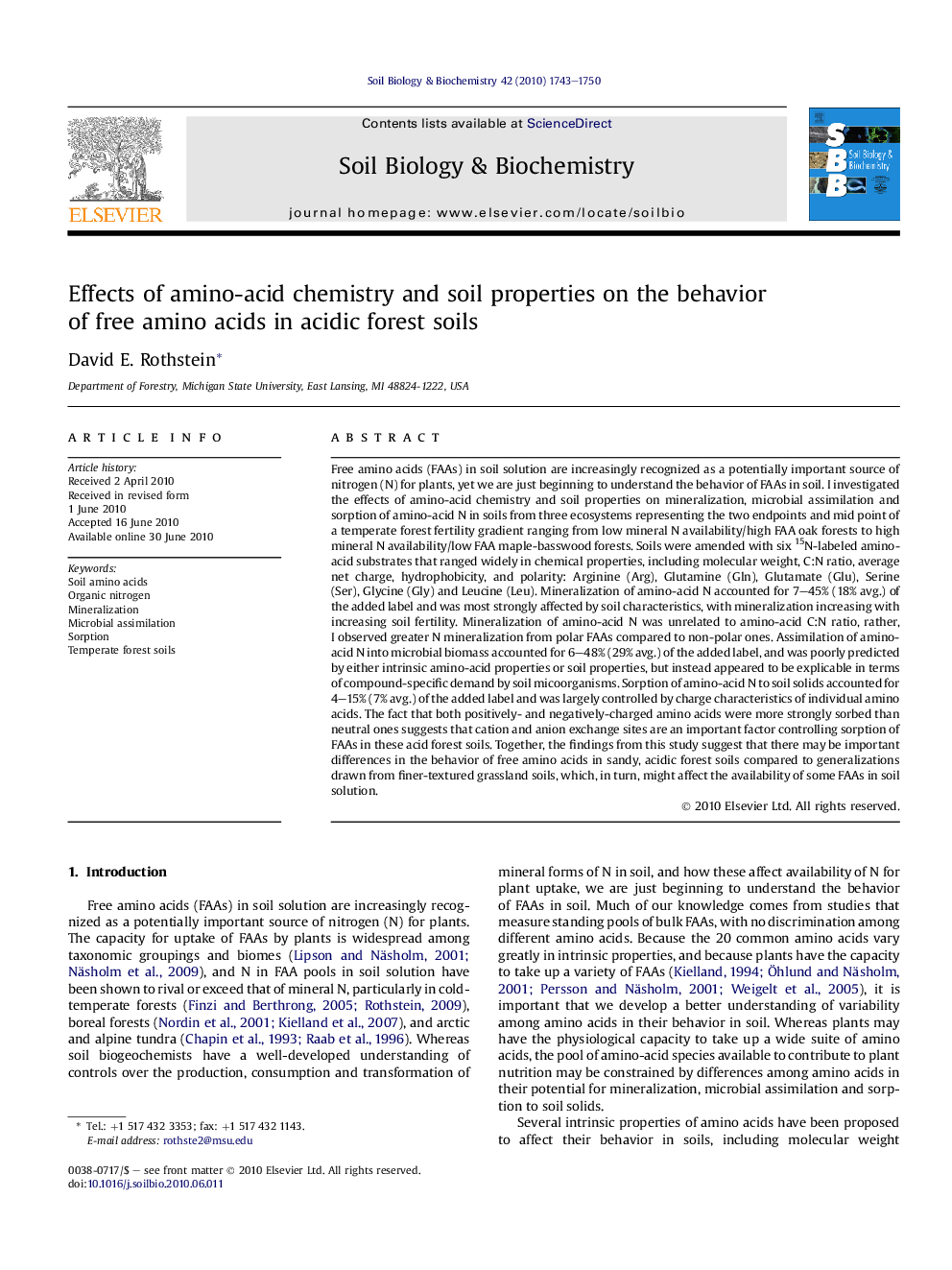| کد مقاله | کد نشریه | سال انتشار | مقاله انگلیسی | نسخه تمام متن |
|---|---|---|---|---|
| 2025409 | 1069995 | 2010 | 8 صفحه PDF | دانلود رایگان |

Free amino acids (FAAs) in soil solution are increasingly recognized as a potentially important source of nitrogen (N) for plants, yet we are just beginning to understand the behavior of FAAs in soil. I investigated the effects of amino-acid chemistry and soil properties on mineralization, microbial assimilation and sorption of amino-acid N in soils from three ecosystems representing the two endpoints and mid point of a temperate forest fertility gradient ranging from low mineral N availability/high FAA oak forests to high mineral N availability/low FAA maple-basswood forests. Soils were amended with six 15N-labeled amino-acid substrates that ranged widely in chemical properties, including molecular weight, C:N ratio, average net charge, hydrophobicity, and polarity: Arginine (Arg), Glutamine (Gln), Glutamate (Glu), Serine (Ser), Glycine (Gly) and Leucine (Leu). Mineralization of amino-acid N accounted for 7–45% (18% avg.) of the added label and was most strongly affected by soil characteristics, with mineralization increasing with increasing soil fertility. Mineralization of amino-acid N was unrelated to amino-acid C:N ratio, rather, I observed greater N mineralization from polar FAAs compared to non-polar ones. Assimilation of amino-acid N into microbial biomass accounted for 6–48% (29% avg.) of the added label, and was poorly predicted by either intrinsic amino-acid properties or soil properties, but instead appeared to be explicable in terms of compound-specific demand by soil micoorganisms. Sorption of amino-acid N to soil solids accounted for 4–15% (7% avg.) of the added label and was largely controlled by charge characteristics of individual amino acids. The fact that both positively- and negatively-charged amino acids were more strongly sorbed than neutral ones suggests that cation and anion exchange sites are an important factor controlling sorption of FAAs in these acid forest soils. Together, the findings from this study suggest that there may be important differences in the behavior of free amino acids in sandy, acidic forest soils compared to generalizations drawn from finer-textured grassland soils, which, in turn, might affect the availability of some FAAs in soil solution.
Journal: Soil Biology and Biochemistry - Volume 42, Issue 10, October 2010, Pages 1743–1750